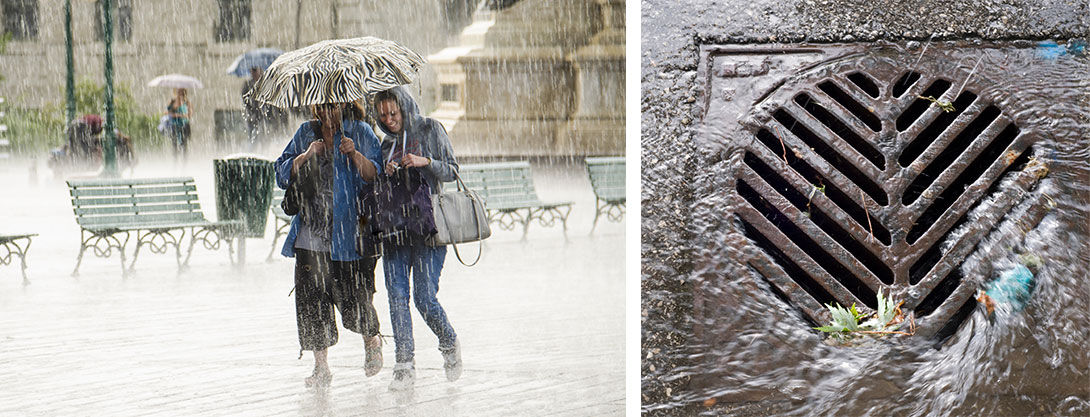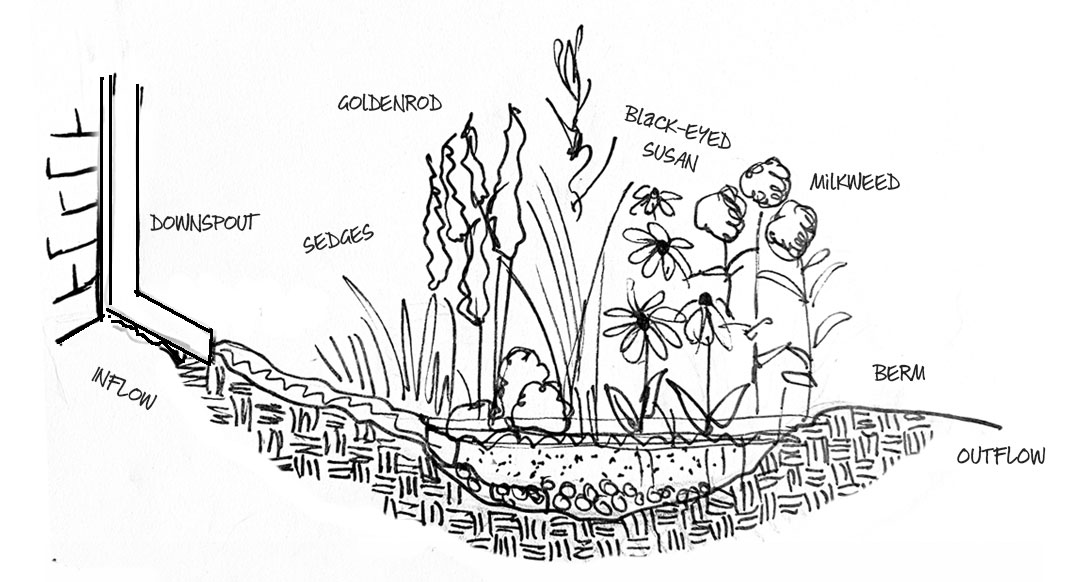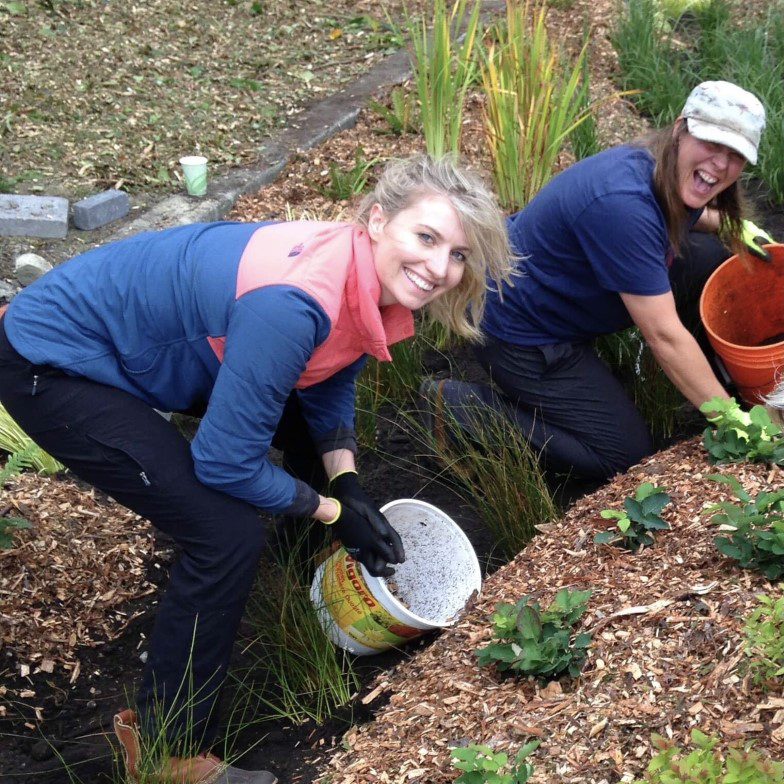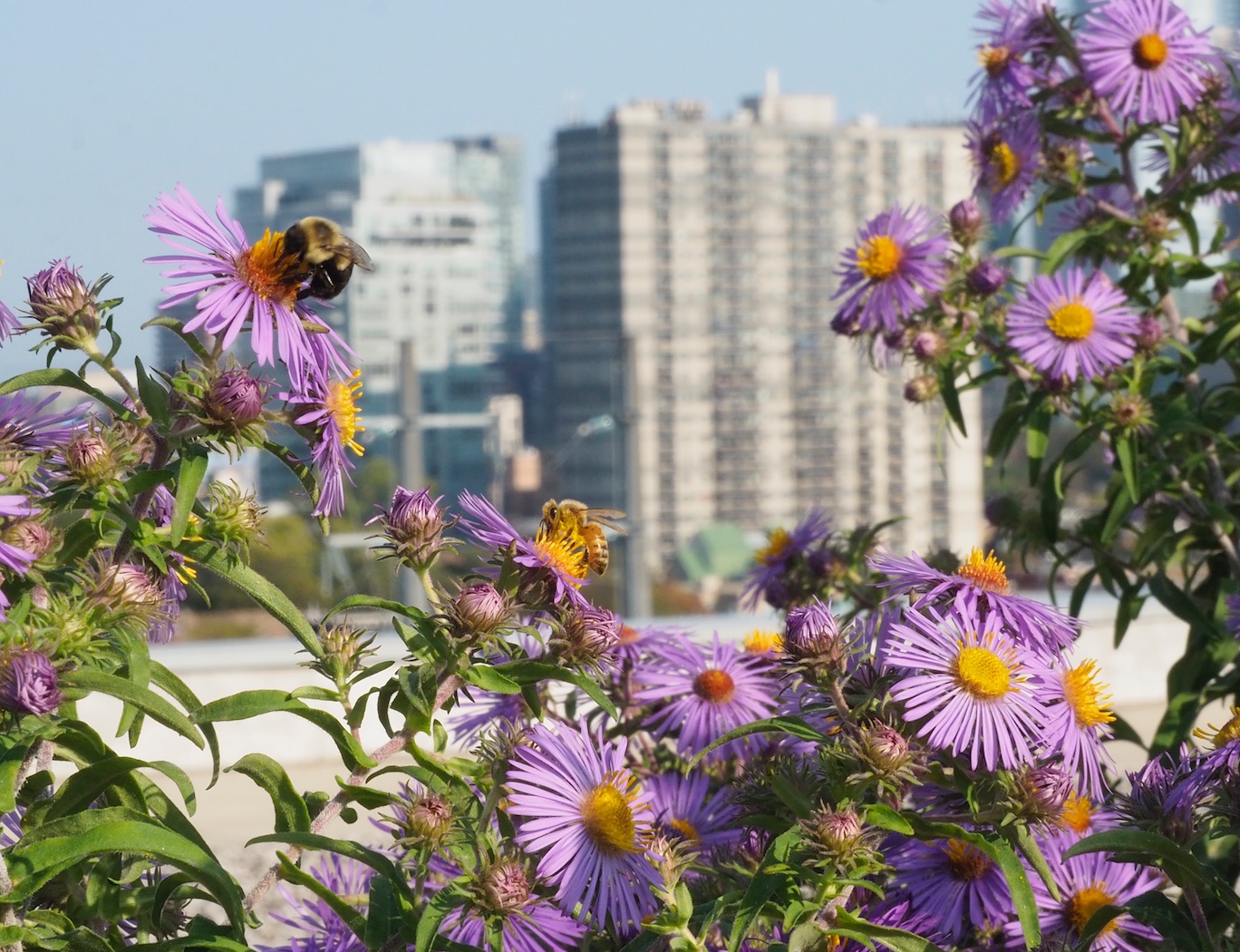What is a rain garden (and how does it reduce climate change impacts)?
Ever watch a storm from a street-facing window and see rivers of rain running down driveways and roads? If you have a yard, have you noticed water pooling in a low spot in your lawn?
The reason for this accumulation of rainwater is the “greying” of urban landscapes and the increase in extreme weather events from climate change. As we develop more land for housing and industry, we create more concrete, roofs and other impervious surfaces where there once were plants and trees.

So, instead of being absorbed, rainwater runs off these surfaces and causes flooding and/or carries pollutants (salt, fertilizer, pesticides, pet poop) into our sewers and waterways. This flooding can cause raw sewage to overflow into lakes and streams, making them unsafe (and gross).
How rain gardens help
Rain gardens help mitigate weather extremes, which we’re experiencing more often due to climate change. This includes more frequent flooding in Eastern Canada and more frequent droughts and wildfires in Western Canada.
Rain gardens help weather both extreme wetness and extreme dryness: they can absorb up to 30 per cent more rainwater than a turf lawn and can make efficient use of limited water relative to lawns, which need watering during droughts to stay healthy.

WWF-Canada recommends growing native plants that can tolerate both wet and dry conditions in your rain garden. Native plants are well-adapted to local conditions and, once established, will require less maintenance and care than non-native plants.
The roots of certain native plants can grow deeply into the ground, giving the plant added strength, improving soil conditions and protecting the area from erosion. Native plants also have the added benefit of supporting the local ecosystem, providing food and shelter for other living things that are native to your area such as insect pollinators and birds.
In addition to filtering rainwater and providing habitat, a rain garden with native plants can help protect your property from water damage, be beautiful to look at and offer these benefits at any size.
Building your own rain garden can be easy as one, two, three:
1. Plan

A great place to start is re:grow, our how-to hub for growing native plants. There, you can create a free account to access expert guidance on creating an action plan for your rain garden and on nurturing native plants.
When planning a rain garden, it’s important to first study your space. Pick a rainy day and watch how the water is coming off your home. A downspout can be key to choosing your rain garden location. Ideally, you’ll want to plan a garden that starts by the downspout and guides water away from your house and through areas available for planting.
Consider how big you want to make your garden and what obstacles (paths, driveways or sidewalks) that you need to plan around. Experts recommend your garden should divert water at least three metres away from the foundation of a building.
Choose a variety of native plants, shrubs and grasses that will flower at different times of the year and create visual interest with their different textures and heights. Also check with local utility companies before digging if you’re unsure where or how deep underground infrastructure for electricity, gas, water, communications or other utilities are.
2. Plant

Working from your plan, you’ll start with digging out a channel to divert the water flow. You can use the soil you remove to create berms (raised barriers or ridges) on either side of this channel to keep the water contained.
You can landscape the garden with rocks, gravel, or simply plants and mulch. Check this link or with your local municipality to see if they have examples in your area.
Visit re:grow for more tips on planting your native plants.

3. Put your feet up
A well-planned rain garden should sustain itself with little maintenance. To help plants establish, water thoroughly during dry periods the first year of planting.
As plants grow they will deepen their roots and create habitat for wildlife. You won’t need to cut things back in the fall; plants will seed themselves and dead plant leaves and stems will protect roots and overwintering insects. In the spring fallen leaves will make mulch and plants will grow back to their full glory.
Just sit back and enjoy the colour of flowers and foliage, the sounds of birds and bees, and the smell of clean air around you.
For more guidance on stewarding your native plant rain garden, visit re:grow.
Rain garden resources for different regions of Canada
For more advice and examples of rain gardens in your area, check out the resources below or consult your local municipalities and conservation groups.
B.C.
Alberta
Prairies
Ontario
- https://www.ontario.ca/page/understanding-stormwater-management-introduction-stormwater-management-planning-and-design
- https://trca.ca/news/complete-guide-building-maintaining-rain-garden/
- https://onplants.ca/rain-garden-information/
Quebec (jardin pluvial)
- https://www.ecohabitation.com/guides/3446/gerer-eau-ruissellement-jardin-de-pluie/
- https://robvq.qc.ca/gdep/sinspirer/
- https://jardinsintelligents.org/en/home/
Atlantic Provinces

